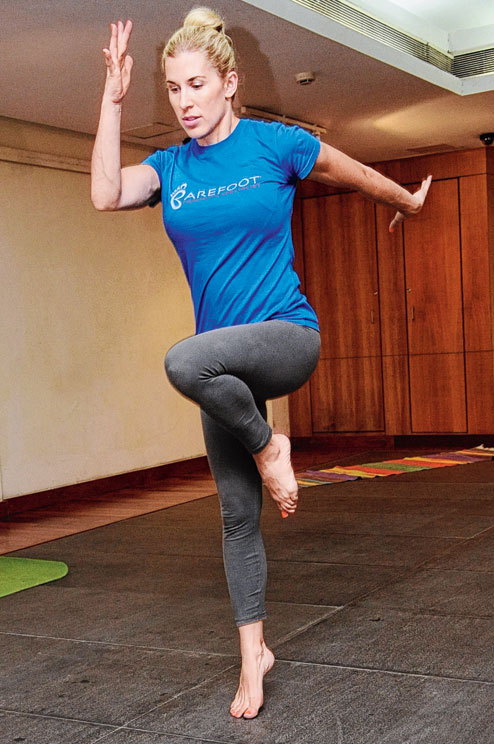

Barefoot was the word of the day at ICCR last Friday. A rage in the fitness world right now, barefoot training goes against the age-old practice of training with shoes, concentrating on the connection between the feet and the ground and its importance. Emily Splichal — podiatrist, human movement specialist and the founder of the New York-based Evidence Based Fitness Academy (EBFA) — held an intensive crash course for a class of 35 comprising mostly professionals and doctors. t2 stepped in and took notes...
What is barefoot training?
Barefoot training does not literally mean training barefoot. It is much more complex. It is about helping you restore your relationship with the ground. You’re tapping into the nervous system, and the skin on the bottom of your feet is very sensitive to various stimuli.
Why barefoot training?
I believe that our connection is really with the ground. As soon as you put on shoes, you block the skin and all your movements become delayed. A lot of people get injured like, say get an achilles tendonitis, while walking which means that there’s some sort of delay of connection between the foot and the core. This affects the stability and the way they interact with the ground.
A lot of people particularly in the US have shifted to standing desks so then you can do short foot exercises and strengthen the foot which taps into your core and also protects your back. Posture can translate to focus, so you can do more work.
How can people access a barefoot training specialist?
I developed my company EBFA in 2010 and I started travelling all over the world teaching in 2012. On
evidencebasedfitnessacademy.com, you can find a barefoot specialist and there are about 22 countries with trainers who are listed. There are many in India as well. Outside of Japan and the US, there are probably the largest number of barefoot training specialists in India. Last March, there was a Barefoot Training Summit in Delhi. But this is my first time in Calcutta.
Can everyone do barefoot training?
If somebody has severe flatfoot or any open ulcer or infections, it’s best not to. But even diabetics who have neuropathy can do the training because neuropathy is primarily sensory, so they won’t feel their feet but they still have motor function. They will still be able to sequence the foot and the core. Patients with neuropathy have a high fall risk, which is why barefoot training is all the more helpful for them.
Pictures: Sayantan Ghosh










